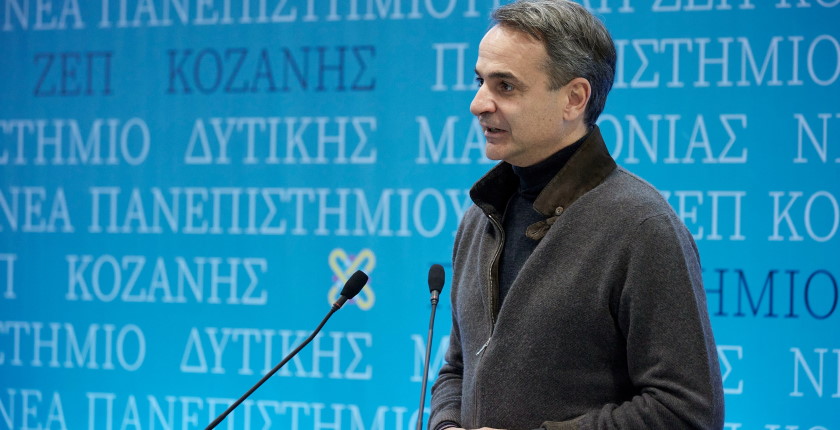
Photo: Greek Prime Minister's Office
The Ptolemaida 5 lignite-fired power plant was inaugurated today by Greek Prime Minister Kyriakos Mitsotakis, Public Power Corp. Chairman and CEO George Stassis and GEK Terna Chairman and CEO George Peristeris.
In 2019, the New Democracy government took office in Greece, promising a swift turn away from lignite towards renewables and natural gas as a means to conduct the country’s energy transition. In the meantime, the cabinet was forced to acknowledge the importance of the new Ptolemaida 5 coal plant, as the energy crisis led to a policy revision and an increased focus on energy security.
Mitsotakis: The extension of lignite use won’t last long
Mitsotakis himself recognized that “Ptolemaida 5 is of strategic importance” while adding that the use of lignite has been extended because of the war in Ukraine but not for long.
PPC’s Ptolemaida 5 was constructed by Terna in Ptolemaida in Western Macedonia. It has a capacity of 660 MW with modern technology that reduces emissions. According to Mitsotakis, the cost of lignite for Ptolemaida 5 will be EUR 30 per MWh versus EUR 45 per MWh for older lignite plants, while it emits one ton of carbon dioxide per megawatt-hour versus 1.4 tons. It makes it competitive against natural gas plants even at prices of electricity lower than today.
However, it is not enough to make the unit commercially viable in the long run so it has been decided to either convert it to natural gas some time after 2028, or make it part of a capacity mechanism.
It should be noted that Ptolemaida 5 is not the last lignite plant to be built in the Balkans, despite the ongoing coal phaseout process. Indeed, Serbia plans to inaugurate the Kostolac B3 thermal power plant in October, in order to overcome energy supply issues and reduce imports.
Western Macedonia gets massive support
Western Macedonia is one of two lignite regions in Greece, the other one being Megalopolis in the Peloponnese. The government has pledged to support it with generous amounts and with the help of the European Union’s Just Transition Fund and Recovery and Resilience Facility (RRF).
According to Mitsotakis, over EUR 4 billion of funds will be funneled for the completion of over 380 projects aiming at facilitating the region’s transition and a new development model.
Energy accounts for over EUR 1 billion. The program includes a new natural gas pipeline, developing the power and gas network, creating new district heating units, upgrading buldings and renewable energy projects.
New subsidies for photovoltaics with batteries
By March 15, the Ministry of Environment and Energy will launch a support program to cover 60% of the installation of rooftop solar power panels with batteries for households across the country, including Western Macedonia. To this end, 2 GW of electric space has been earmarked in the distribution grid. In total, 250,000 solar roofs are expected to be constructed.
At the same time, Minister Kostas Skrekas pledged to announce a EUR 360 million program this month for corporate energy communities to connect photovoltaics with batteries of 10 MW and more to the transmission grid. Small and mid-size companies can take advantage of this program to find electric space, since the distribution grid is congested.


















Be the first one to comment on this article.